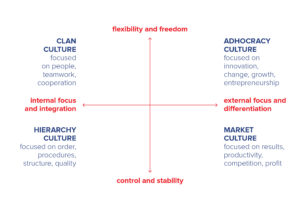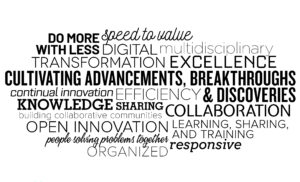Your Brand’s Culture is the Cornerstone of Your Branding and Marketing.
Your brand’s culture encompasses much more than the superficial perceptions portrayed on public facing materials. Your culture can include behaviors, values, aesthetics, or goals all shared by your team. While intangible, you immediately understand a company’s unique culture when you walk into an office or a store.
It can seem elusive to cultivate, but leadership sets the overall tone by how they interact with employees, customers, and the challenges encountered in the work environment. Companies and organizations like to promote their culture as a positive part of their brand. Culture contributes to why employees enjoy working at a company and why customers are attracted to its products, purpose, and aesthetics. So, how do you best leverage culture for successful branding and marketing?
Your employees determine your ethos.
To start, we need to recognize that culture usually just “happens”. How culture happens is akin to how water will find its own level. It cannot be manufactured but can be highly influenced by leadership. It trickles down from leadership to employees and then to customers and the general public.
According to Robert E. Quinn and Kim S. Cameron the way leadership reacts and responds to employees and circumstances creates four main types of culture groups.
1. Clan Culture
- Tends to be a welcoming and friendly work environment usually found in small or family-run businesses
- Leaders are seen as mentors and share commonalities with employees
- Communication is usually simple but the company’s processes are difficult
- Teamwork, openness, and collaboration are highly valued
2. Hierarchy Culture
- Formal and procedure oriented work environment
- Leadership insists on efficiency and structure to keep the company running smoothly
- Specific roles and responsibilities are a critical part of the organization
- Because of the formality and rigid roles, this group tends to not foster creativity and innovation
3. Market Culture
- Completely result-oriented, this culture places value on competition and completion
- Leadership demands high levels of performance but are keen to reward success and initiative
- Quantifiable goals and targets are essential
- This group is commonly seen in sales and extremely motivated, driven teams
4. Adhocracy Culture
- Fosters risk-taking, creativity, and innovation in dynamic and ever-changing work environment
- Emphasizes contribution, individual initiative, and free thinking
- Encourages experimentation
- This group is usually found among startups and entrepreneurs
When thinking about these culture groups, it’s important to understand which is best suited for your organization instead of what you want it to be. For example, it’s not suggested to force a mom and pop shop to adhere to adhocracy culture or for a bank to run on a clan culture.
After selecting which culture will work best for your company, you can then harness it to create a successful and productive environment for your team. By properly harnessing and cultivating your culture, you can translate it into messaging that appeals and relates to your customers.
“How you do anything is how you do everything.” — Zen Buddhist
No matter what group your company falls into, it’s important to define the traits that drive your brand’s culture. By taking a stance on key areas that define your company’s culture, you can develop a plan to market those benefits or values to customers.
You know the saying, “Be your most authentic self”? Well, as much as that goes for personal goals it also rings true for brands. Your brand authenticity is essential to how easily your culture can be marketed and interpreted by customers. Keep in mind that marketing your culture can also contain beneficial messaging about your values to investors, stakeholders, boards, community leaders, influencers, and other public figures.
As mentioned earlier, culture starts at the top with leadership. By reinforcing the values that are foundational to the company’s culture, leaders ingrain it into the brand’s personality. This is helpful as people naturally gravitate towards those with similar values and beliefs. So, if your brand’s personality aligns well with your key demographics, it will easily resonate with them.
Note that while internal insights from employees help us identify the gaps, the perception of an external audience helps you foster a loyal customer base. And when the internal and external perceptions agree, you achieve the ultimate in company culture: alignment!
Company culture is strategic.
Culture may seem elusive to pin down, but finding a way to effectively communicate how it benefits customers can give culture real purpose and meaning. By defining the elements of your company’s culture and putting it into words, you can help turn them into useful strategies.
Strategies should be built on the foundation of your company’s cultural attributes and beliefs. Culture tends to be more fluid in nature while strategies need to be a bit more defined to see results. While both culture and strategy should be adaptable, strategy acts more like a map route to be followed.
Want to successfully build on your company’s culture in a way that will highlight benefits to your clients? We can help you create a “culture map” based on internal and external interviews and surveys. This allows you to establish alignment among employees while defining your brand’s personality for customers. We can also expand on your culture to produce defined tone, language, and visuals and more that will help with marketing campaigns. We can also help you never lose sight of the key areas of authenticity and consistency within your company’s culture.
Contact us to see how we can help you leverage your culture in marketing and branding.





Recent Comments